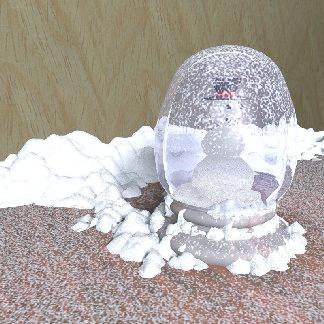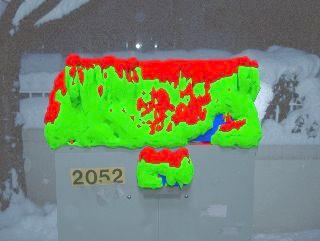
Snow stability algorithms can also
be used to simulate water accumulation. Water from the red patch fills
the first basin before overflowing into subsequent basins.
|
Water
By changing some of the physical properties of snow, the basic algorithm
can also simulate the accumulation of water, from the sky or elsewhere.
The figure on the left shows an example of an empty fountain slowly filling
up with water. Only the patch of sky shown as a red square has any mass
to contribute, approximating how water appears at a spout, fills the first
basin, and overflows to lower basins. All surfaces are generated automatically,
freeing animator from having to do it by hand.
|

Wind blows snow against the wall.
|
Wind
Wind is a major factor in the large-scale transport of snow, producing
some very compelling and interesting effects. Our model handles wind in
both snow accumulation and snow stability phases. Wind velocity vectors
can be approximated with a constant direction, or much more accurately
computed off-line.
|
|
Snow Layers
Because of the complexity of most scenes, we use a fairly simple model
of snow properties that assumes snow falls in a single homogenous layer.
However, by running the algorithm several times, we can accumulate multiple
layers, each with different properties. |

Multiple snow layers are shown in
different colors.
|

